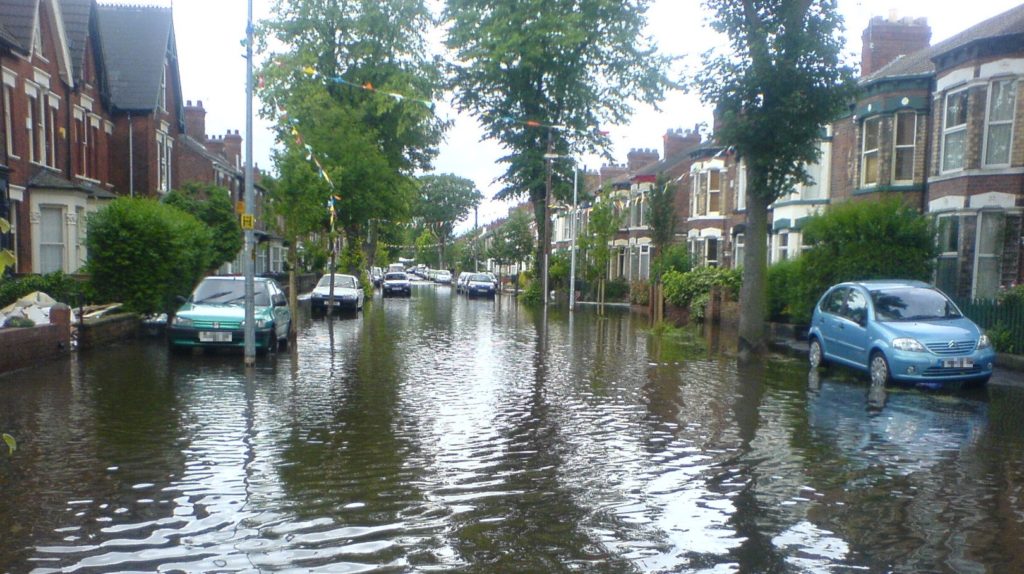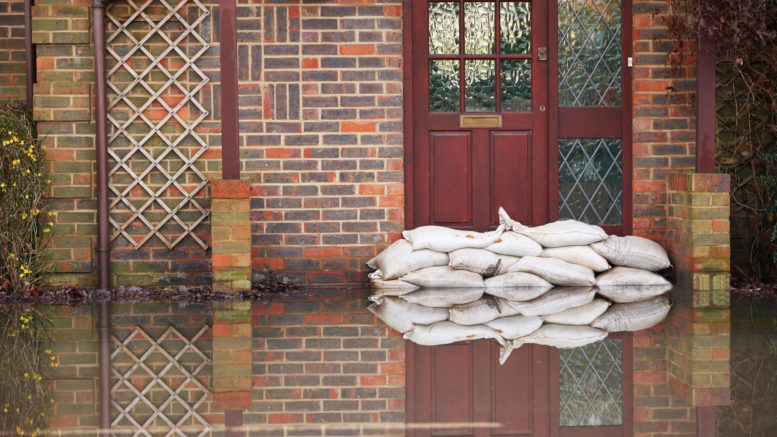Just days ahead of the 15-year anniversary of the 2007 flooding in Hull, Living with Water has revealed the city is lagging behind other towns and cities in Yorkshire when it comes to signing up for crucial flood warnings.
Environment Agency figures show just 6.6 per cent of people in Hull have signed up to receive alerts – lagging behind Barnsley (53.6 per cent), Harrogate (47.3 per cent) and Doncaster (44.2 per cent).
The East Riding sits 7th out of 10 in the flood warning league table – with just 26.9 per cent of the population signed up to receive alerts.
People in Hull and the East Riding can register to receive updates and alerts when flooding is possible, enabling them to take action to protect themselves and their property.
Lee Pitcher, head of partnerships at Yorkshire Water and general manager of Living With Water, said: “It’s important for people in Hull and East Riding to know when flooding is likely so they know how and when to respond. We would urge people in Hull and East Riding to take the time to register so they can stay informed during periods of significant rainfall, such as we experienced 15 years ago.
“At Living with Water we’re working together with the community, as well as Hull City Council, East Riding of Yorkshire Council, the Environment Agency and the University of Hull, to co-design initiatives that will make the area more flood resilient. These made a positive impact during the storms in February, but it is important that people also take their own steps to protect their homes, and signing up for flood alerts is a simple way of doing so.”
| 1 | Barnsley | 53.6 | 246,000 |
| 2 | Harrogate | 47.3 | 75,000 |
| 3 | Doncaster | 44.2 | 110,000 |
| 4 | Bradford | 38.8 | 528,000 |
| 5 | Kirklees | 33.5 | 439,000 |
| 6 | Sheffield | 29.1 | 575,000 |
| 7 | East Riding | 26.9 | 360,000 |
| 8 | York | 26.2 | 209,000 |
| 9 | Leeds | 17.6 | 739,000 |
| 10 | Hull | 6.6 | 300,000 |
| *Figures from Environment Agency – May 2022 | |||
The organisations that make up the Living With Water partnership have invested more than £260m in a variety of flood mitigation schemes since 2007. Despite this, Hull still remains second after London with most properties at risk of flooding.
The partnership is planning to invest a further £23m in surface water schemes over the next five years, but it is important that people living in Hull and East Riding sign up to flood alerts to ensure they get information as quickly as possible in the event of potential flooding.
Living With Water has worked closely with local schools to help educate the next generation about the importance of being prepared. Children have been building flood plans to ensure they feel empowered and prepared to respond in the event of flooding in the future.
Paul Stockhill, Environment Agency area flood risk manager, says: “I urge people to go to gov.uk, check if they’re at risk, and make sure they know what to do if it floods.
“We’re working together in Hull and East Yorkshire as part of the Living With Water partnership to plan for how we will manage future flood risk with a combination of natural and engineered approaches.
“Flood defences can’t prevent all future flooding, so it’s important that communities at increased risk of flooding are able to adapt and prepare.”

Rachel Glossop, flood risk manager at Hull City Council, said: “While the Living with Water partnership has invested heavily in flood infrastructure since the floods of 2007 and 2013, we must not forget that Hull still has a high level of flood risk, which can never be completely removed.
“It is important that everyone plays a part in managing flood risk and this includes being aware of this risk and taking steps to mitigate it.
“Flood warnings can be received by text, email or phone call, providing near-instant information on locations at imminent risk of flooding and links to detailed up-to-date information.
“It is vital that everyone signs up to these alerts so they can take immediate action to protect themselves and their properties.”
People can check the risk of flooding for their home or business and sign up for alerts via phone, email or text message through the government website.
The best way to protect yourself from flooding is to know what to do in advance – download and save a simple Prepare, Act, Survive plan so you’ll know what to do when there’s a flood warning in your area.




